Watering Horses
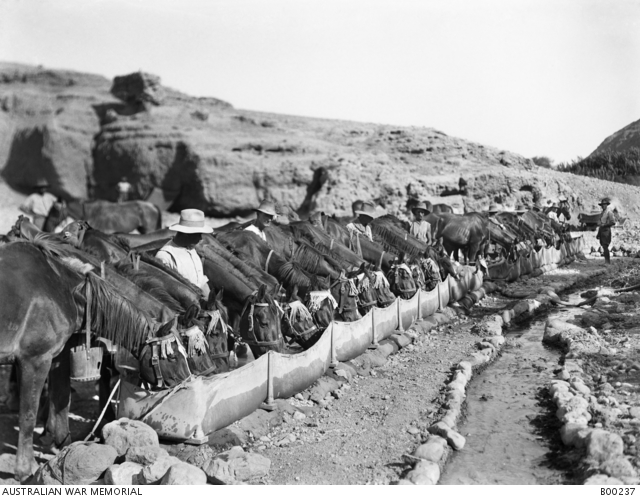
From Waler Data Base @ FaceBook. Image: ‘Watering horses of A Squadron, 9th Australian Light Horse from a canvas trough, at Ain Duk, in the Jordan Valley. Palestine. 17 August 1918.’ AWM
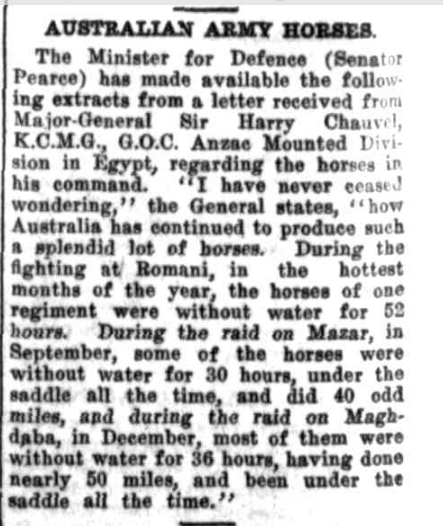
Watering was usually the task of engineers and transport corps. Sourcing water relied on maps, geography, season and local knowledge; often a job for officers and intelligence. Our engineers were ingenious at getting water for men and horses. Advance scouts and those working wide such as sigs would find water too. Hand pumping was very hard yakka.
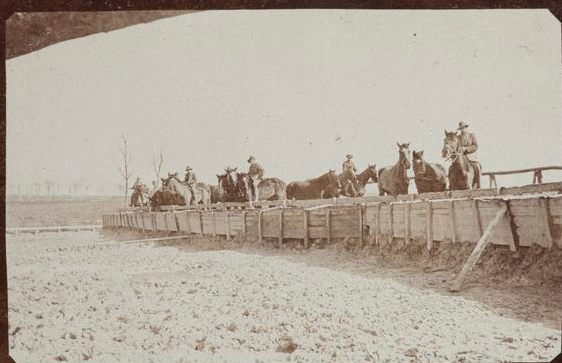
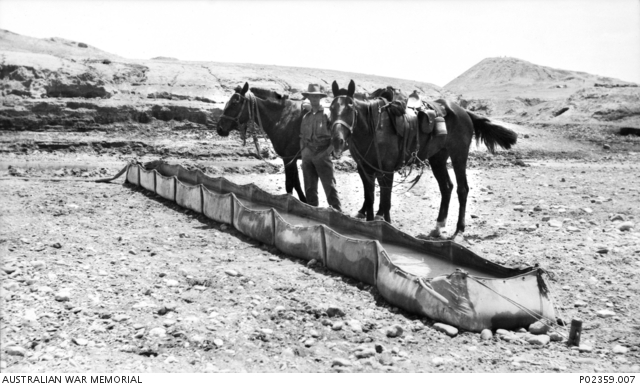
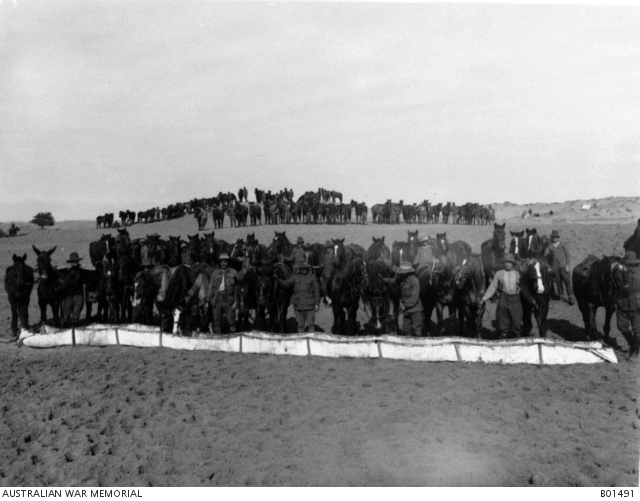
Images: ‘Horses at Water Trough, Mametz, Somme, France, Sergeant John Lord, World War I, 1917.’
Photographer: John Lord, Museums Victoria
‘Egypt. c. 1915. A soldier, possibly a member of the Machine Gun Squadron, 2nd Light Horse Brigade, stands between two horses at a canvas water trough in the desert. Note the horses’ hogged manes. (Donor W. Buchanan).’ AWM
Unidentified members of the 1st Australian Light Horse Brigade watering their horses at a canvas trough while the remainder wait their turn in the background.
Palestine, Esdud. 9 January 1918.’ James Francis (Frank) Hurley photo. AWM
Rivers, wells, reservoirs, wadis (oasis’) and any watering place found, was a boon; although not always drinkable and not always in sufficient quantity.
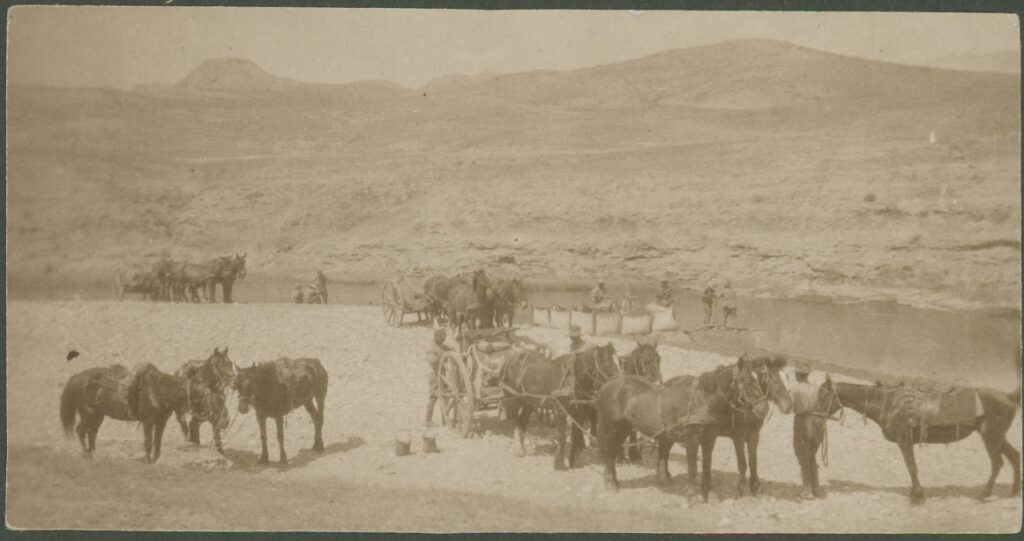
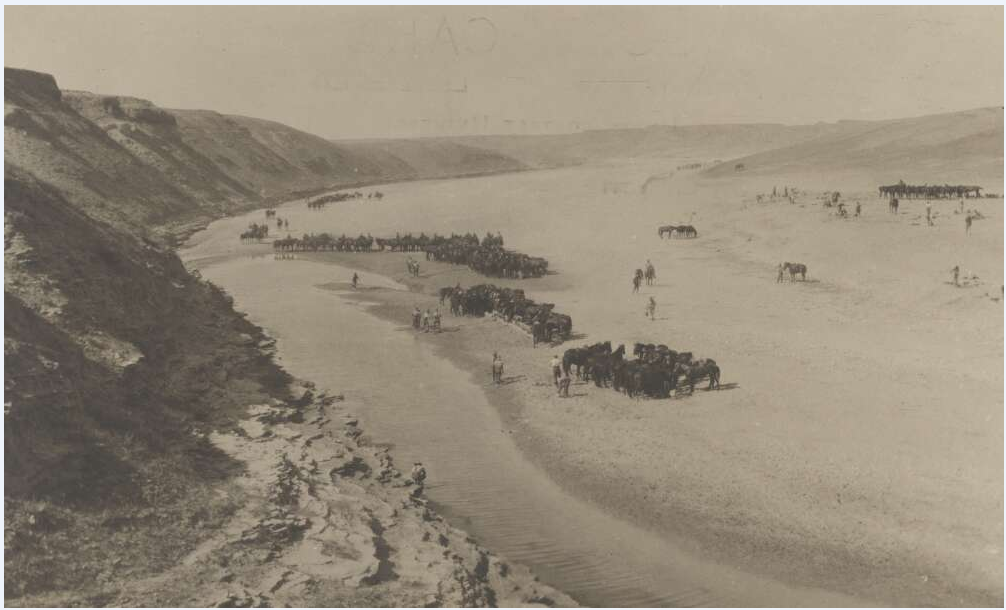
Images: ‘Filling water carts in Wadi creek. c. 1917.’ State Library of South Australia.
‘Watering horses at Wadi Ghuzce, Palestine, approximately 1917.’ National Library of Australia
Water tanks drawn by horses or mules were taken up for troops and horses. These animals worked hard in arduous conditions pulling the big weights. Regiments such as ambulance were largely self contained – their transport section consisted of at least two water carts, and each ambulance wagon had a smaller water tank underneath.
In the desert, camels carried water where wheeled transport could not go.
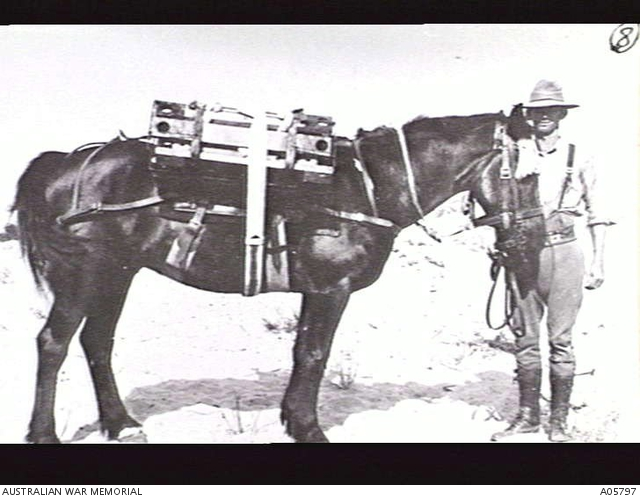
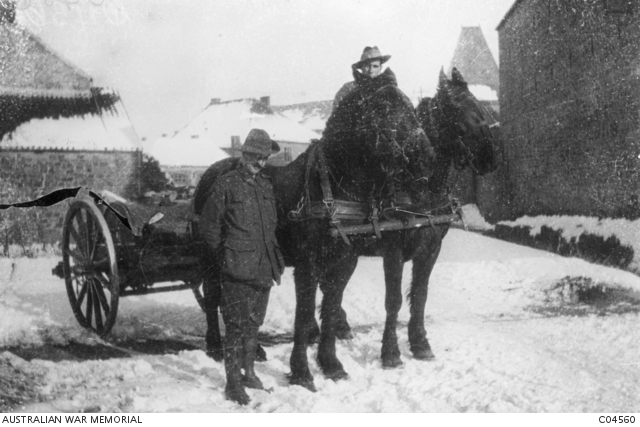
Images: ‘Palestine c. 1917. A horse saddled with a carrier for trough standards used by 1st field squadron engineers in suppying water to the troops. (Donor: 1st field squadron diary.) 1st Field Squadron, Australian Engineers.’ AWM
‘Biesmeree, France. 1 February 1919. Water cart and two light draught horses driven by 4th Australian Divisional Ammunition Column soldiers, Driver W. W. Wright, while standing in the snow is Gunner Courtnay. 1.2. 1919.’ AWM
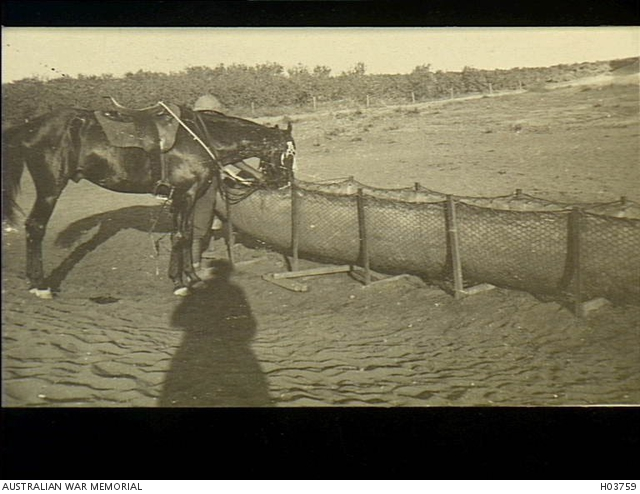
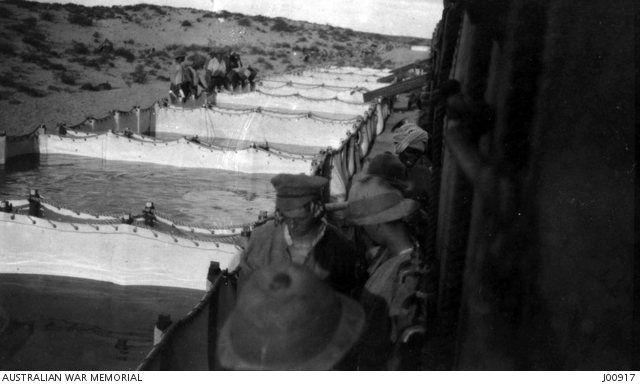
Images: ‘Palestine. c. 1917. An Australian cavalry horse drinking from a canvas water trough which is supported by an improvised frame of fencing pickets and rabbit wire.’ AWM
‘One of the major hurdles to be overcome by the troops in the First World War was the lack of water. The canvas troughs shown were placed near the railway at intervals of about 20 miles. The water was brought up in huge tanks from the canal. The troughs were filled from the water tanks in the train and from there the water was taken by camels in fantasses to the troops. The fantasses were copper or galvanised vessels carrying about 10 gallons. 1916.’ AWM
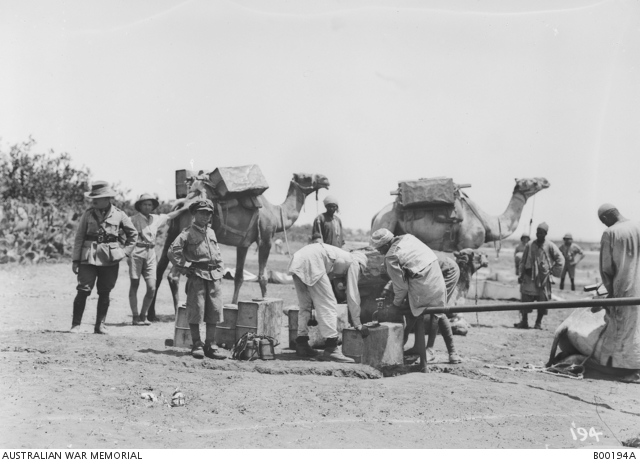
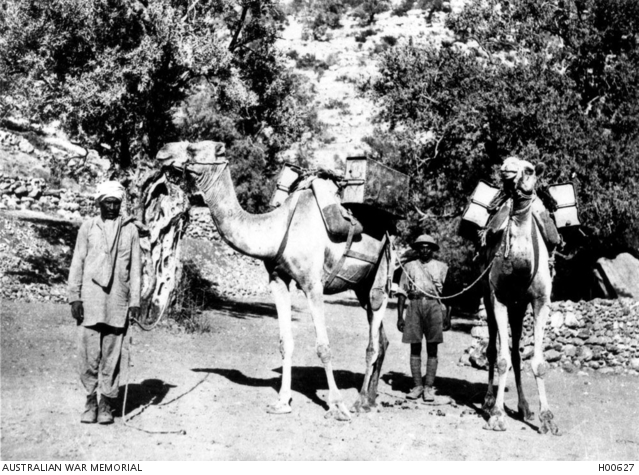
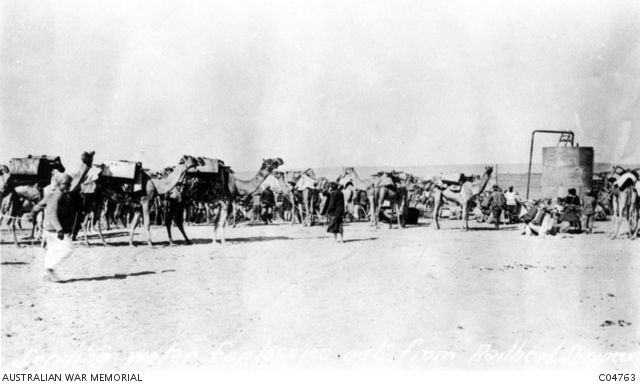
Images: ‘Camels being loaded with a supply of drinking water carried in ‘fantasses’ from the pipehead. 1918. Jaffa, Palestine.’ AWM
‘Camels with fantasses for carrying water. 1918.’ AWM
‘Loading fantasses on camels at the railhead, Serapeum, to be carried to the troops in the Line.’ AWM
Trough construction materials and pumps were carried on wagons, or where this was not possible, on pack-horses. Railways were a boon.
Needless to say normal protocols were followed. Humans to water upstream or from identified tanks/supply. Vital to avoid dysentry – boil water for a long time if in doubt, filter and chemically sterilise – water testing and sterilising kits (sterilising usually by chlorination) were carried by transport and done by medical officers. Never toilet near water supply. Humans not to wash or wash clothes in horse troughs until horses watered.
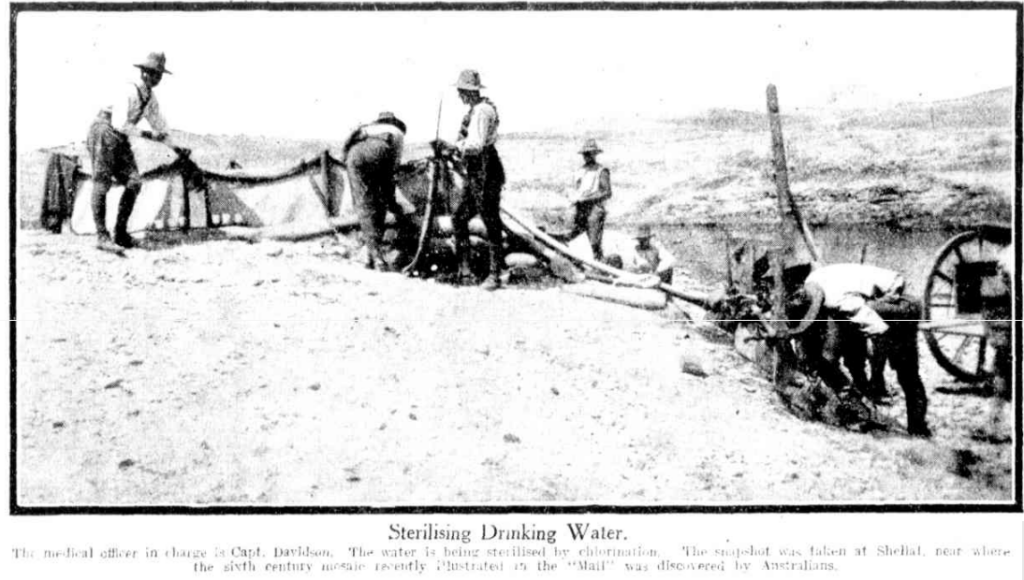
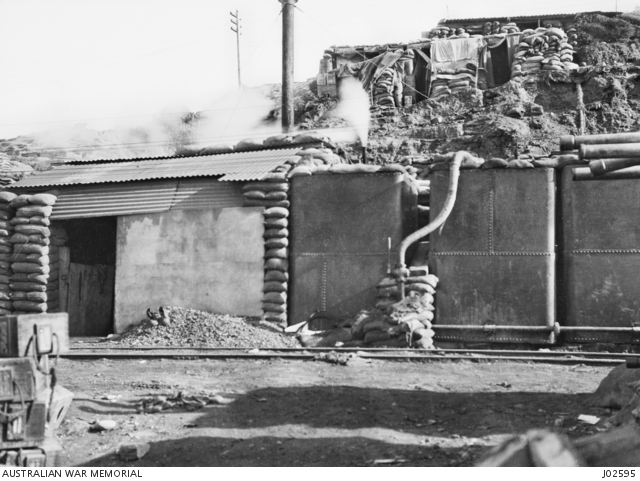
Water tanks and pumping plant on ANZAC Beach in 1915. The water was pumped from barges into these tanks, and from these to tanks higher up the hill. (Donated by Lt.-Col. A.M. Martyn). Turkey, Dardanelles, Gallipoli, Anzac Area (Gallipoli), Anzac Beaches Area, Anzac Beach.’ AWM
Note… Men, horses, donkey, mules all needed water on Gallipoli. Donkeys did the bulk of the work carrying water to men in trenches, over steep difficult terrain. We had some excellent big Australian donkeys there. It’s thought the small donkeys there were locally obtained, they too did a lot of hard work for us. Some working jennies foaled there.
If a village had insufficient water for troops and horses, do not run them dry, bring water in. In some places, particularly bombed out parts of France and Belgium, engineers built substantial water tanks for troops and horses from concrete. Electric pumps were usually found in situ. Gravity where possible and enough fall. Pumps were usually hand pumps. Steam pumps were set up in places. Diesel pumps were used. And yes – our horses carried and carted everything.
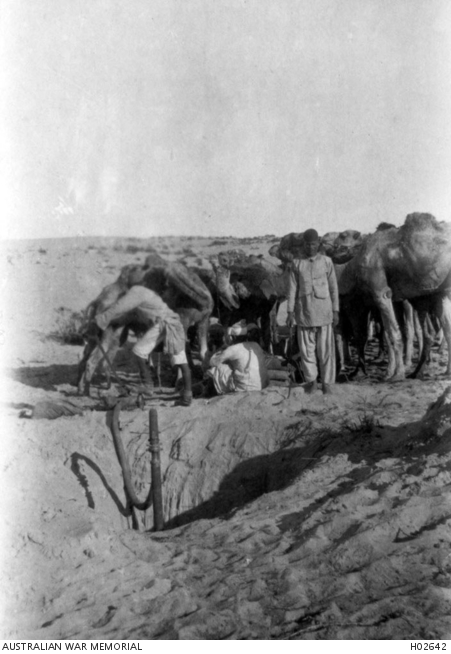
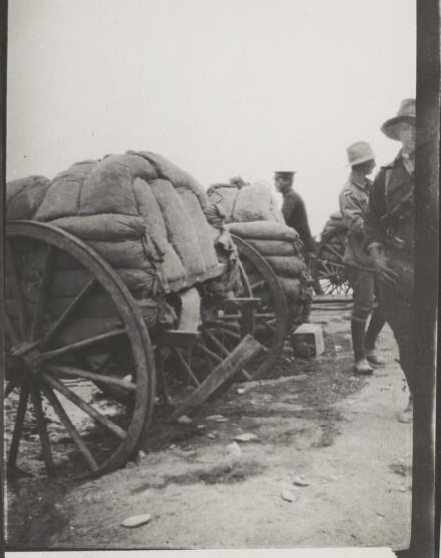
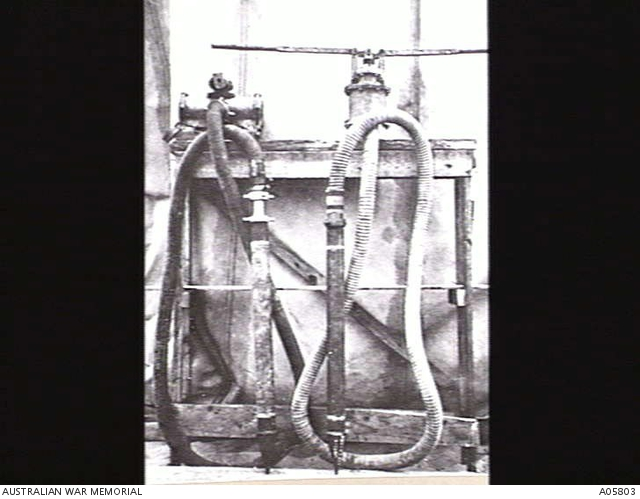
Images: ‘ Raffa, Sinai c. 1917. Natives using a Spear Pump, installed by AIF Engineers, to pump fresh water from the beach into a camel drinking trough. Egypt’. AWM
‘Water cart protected by sandbags, Gallipoli, Turkey, 1915. Joseph Lievesley Beeston collection of photographs.’ National Library of Australia
‘Palestine, c. 1917. Water pumps used by 1st Field Squadron Engineers. (Donor: 1st Field Squadron Diary).’ AWM
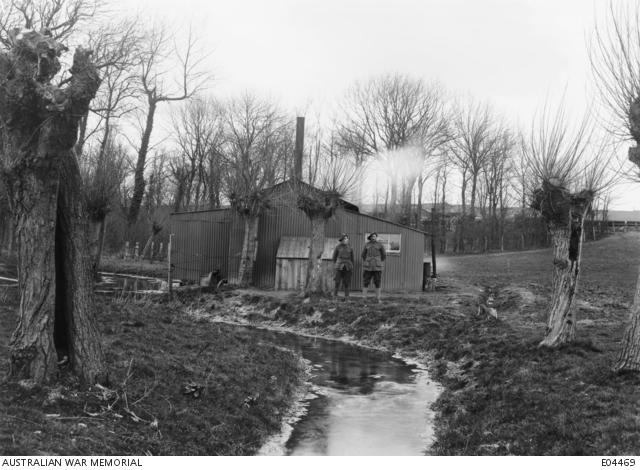
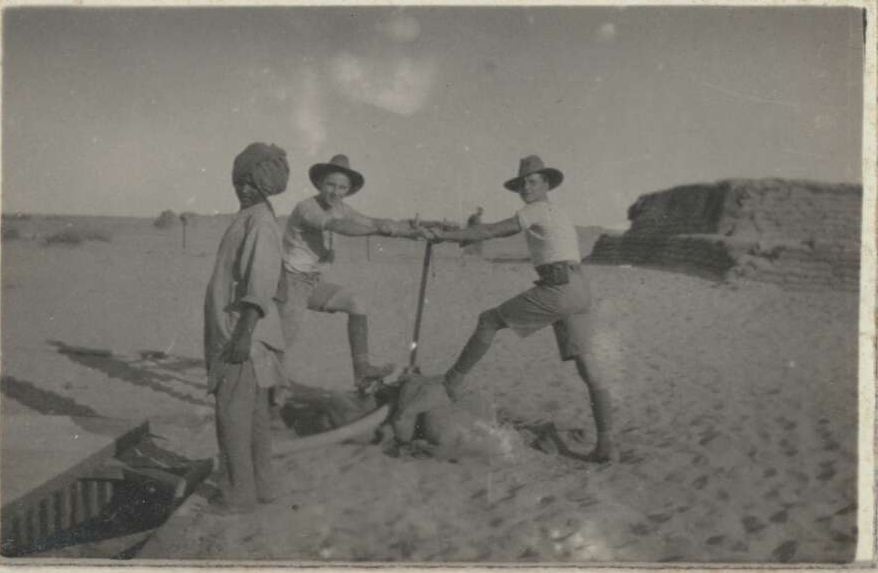
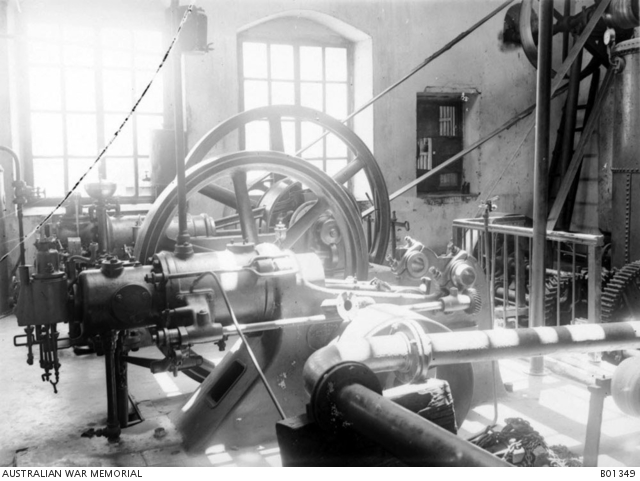
Images: ‘Calais, France. 31 March 1919. The pumping station at the Australian Veterinary Hospital at Calais. The water is pumped from a spring in the hills nearby. The hospital used 50,000 gallons of water daily. The two men are unidentified. 31st March 1919.’ AWM
‘Two soldiers pumping water from a well, with a large sand-bagged emplacement in the background, Middle East, ca. 1917 [picture] / Walter Henry Shiers. Between 1916-18.’ National Library of Australia.
‘An engine and pump-gear inside the pumping station. The engineers of the Australian Light Horse operated the town water supply during the early months of 1918.
Palestine, Rishon. c. 1918.’ AWM
We were also exceedingly fortunate in the Middle East, mostly dry, that Allenby identified water as a priority and moved heaven and earth to get our horses and men life-saving water. Good army logistics literally save lives.
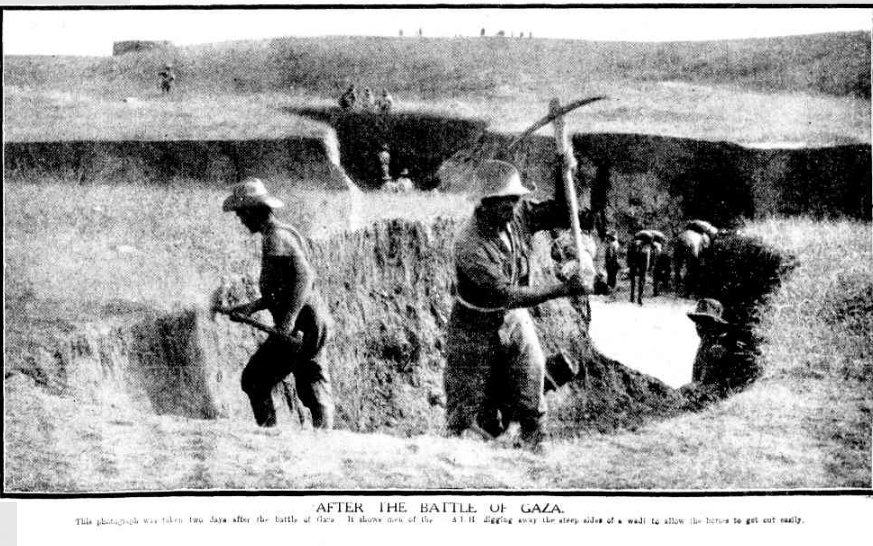
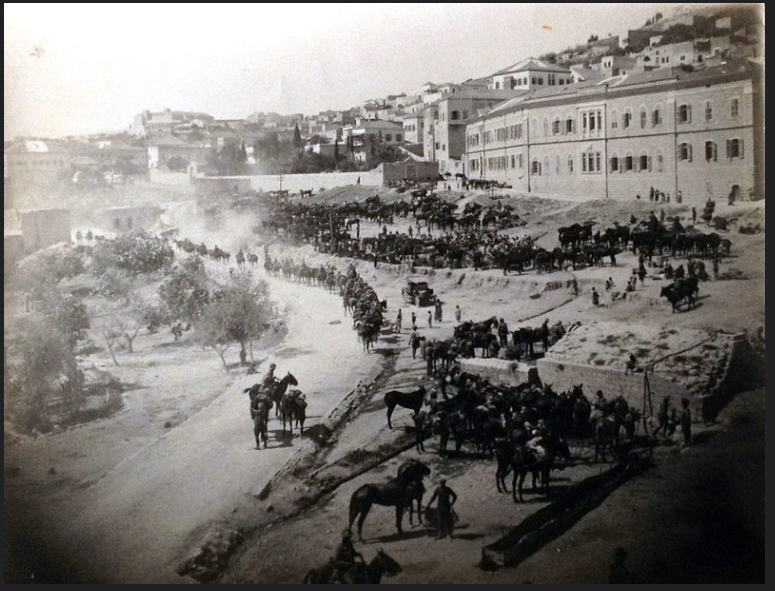

Images: ‘Watering horses in Jerusalem – 1917.’ From Aussie Mobs account on Flickr.
‘Temporary watering stations for cavalry horses of the Australian Light Horse, Gaza.’
c. 1917. National Library of Australia.